Uni sushi is a delicacy that has gained popularity in recent years, especially in Japan and other parts of Asia. Uni, short for “sea urchin,” is a spiny creature that lives in the ocean and is harvested for its edible parts. Uni sushi is made by placing the uni on top of a small ball of rice, creating a unique and flavorful combination of textures and tastes.
Understanding uni is crucial to appreciating uni sushi. Uni is the gonads or reproductive organs of the sea urchin, which have a creamy texture and a rich, briny flavor. There are several different varieties of uni, each with its own unique taste and texture. Uni is graded based on its color, texture, and freshness, with higher grades commanding a higher price.
Key Takeaways
- Uni sushi is a popular delicacy in Japan and other parts of Asia.
- Uni is the reproductive organ of the sea urchin, which have a creamy texture and a rich, briny flavor.
- Uni is graded based on its color, texture, and freshness, with higher grades commanding a higher price.
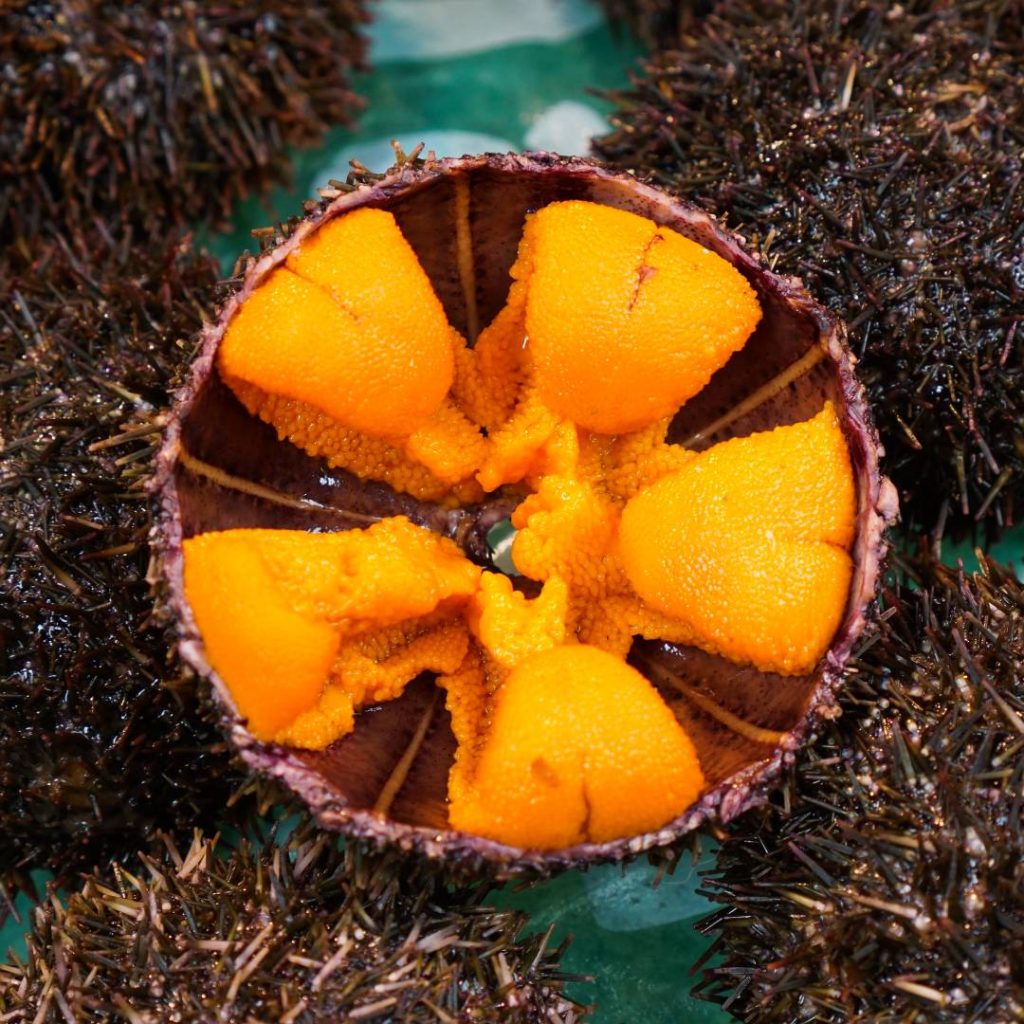
Understanding Uni
Uni sushi is a delicacy enjoyed by many sushi lovers around the world. Uni is the Japanese word for sea urchin, a spiny creature that lives in the ocean. Uni is actually the gonads, or reproductive organs, of the sea urchin. The gonads are made up of two lobes, and the color and texture of the uni can vary depending on the species of sea urchin.
The uni is harvested from the sea urchin and prepared for consumption. Uni can be eaten raw or cooked, and is often served as a sushi topping. The taste of uni is described as rich, creamy, and slightly sweet, with a briny ocean flavor.
It is interesting to note that the color and texture of the uni can vary depending on the gender of the sea urchin. Male sea urchins have a more yellowish color and a firmer texture, while female sea urchins have a more orange color and a softer texture.
The diet of the sea urchin can also affect the taste of the uni. Sea urchins that feed on kelp and other seaweeds tend to have a sweeter and more delicate flavor, while sea urchins that feed on crustaceans and other small sea creatures have a more robust and savory flavor.
In addition to the uni, the milt of the male sea urchin is also considered a delicacy in some parts of the world. Milt is the fluid that contains the sperm of the sea urchin, and has a creamy texture and a slightly sweet flavor.
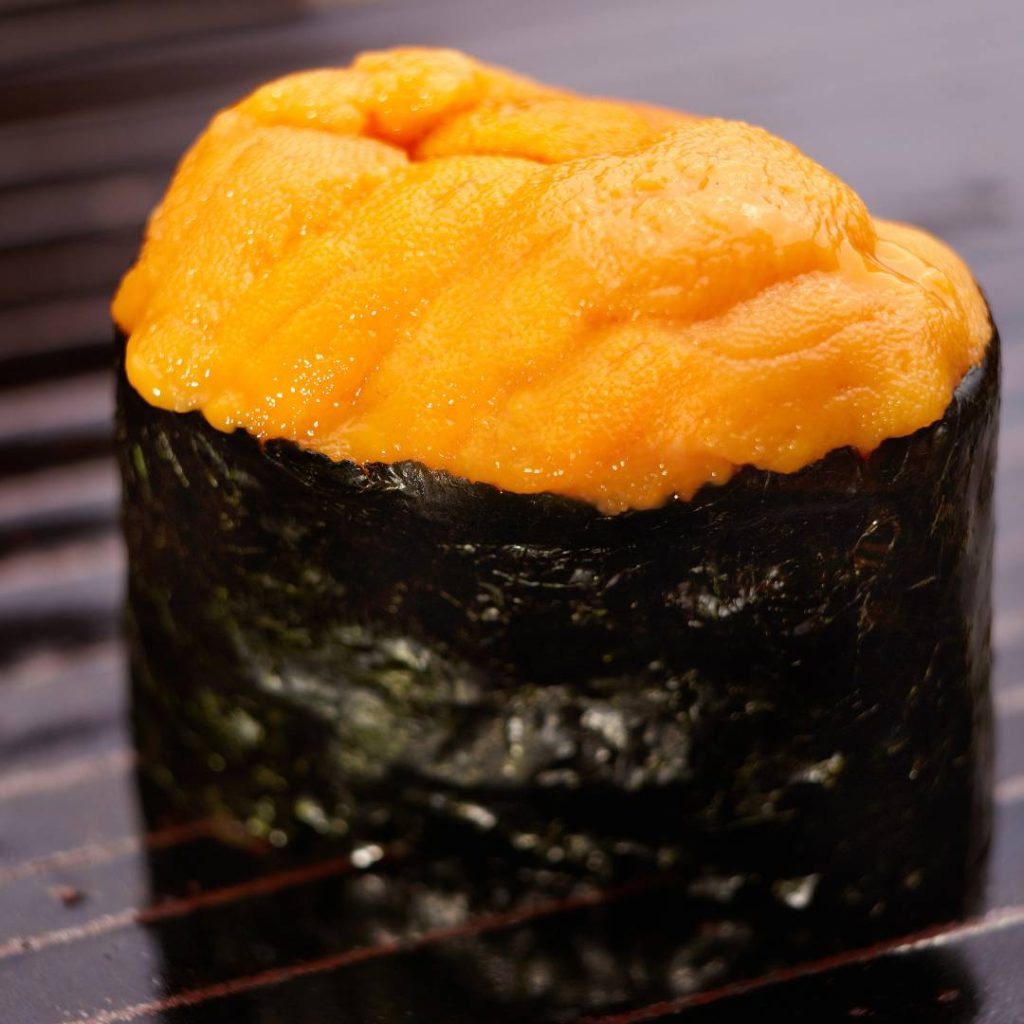
Uni Sushi: A Japanese Delicacy
Uni sushi, also known as sea urchin sushi, is a prized delicacy in Japanese cuisine. It is a type of nigiri sushi, which is a small oblong-shaped mound of sushi rice topped with a slice of fresh raw fish or seafood. Uni sushi is made by placing a piece of uni, the edible part of the sea urchin, on top of the sushi rice.
Uni sushi has a unique flavor and texture that is loved by many sushi enthusiasts. The flavor is often described as briny and sweet, with a slightly creamy and buttery texture that melts in your mouth. Uni sushi is typically served as a gunkan-maki, which is a type of sushi that has a strip of nori seaweed wrapped around the sushi rice to create a boat-like shape that holds the toppings.
Japanese uni, the sea urchin used to make uni sushi, is found in many oceans around the world. However, not all species of uni are edible. In fact, out of the approximately 900 known species of sea urchins, only 18 varieties are considered edible. The most commonly used species for uni sushi is the Japanese uni, which is known for its rich, creamy flavor and delicate texture.
Uni sushi is a popular dish in Japanese cuisine and can be found in many sushi restaurants around the world. It is often considered a luxurious and expensive delicacy due to the high cost of the uni. However, for sushi lovers, it is a must-try dish that offers a unique and unforgettable flavor experience.
Taste and Texture of Uni
When you eat uni sushi, you will notice that the texture is soft and buttery, almost like a custard. The texture can vary depending on the species of sea urchin and the region where it was harvested. For example, Santa Barbara uni from the West Coast of the United States is noted for its large size, coarse texture, and brightly sweet flavor, while Maine uni from the East Coast has a softer texture and a more delicate flavor.
Uni sushi is often served with soy sauce and wasabi, which enhances the flavor and balances out the richness of the uni. Some sushi chefs also add a touch of citrus, such as yuzu or lemon, to brighten up the flavor.
It is worth noting that not everyone enjoys the taste and texture of uni sushi. The creamy texture and oceanic flavor can be an acquired taste, and some people may find it too rich or too strong. However, for those who appreciate the unique flavor of uni, it is a delicacy that is not to be missed.
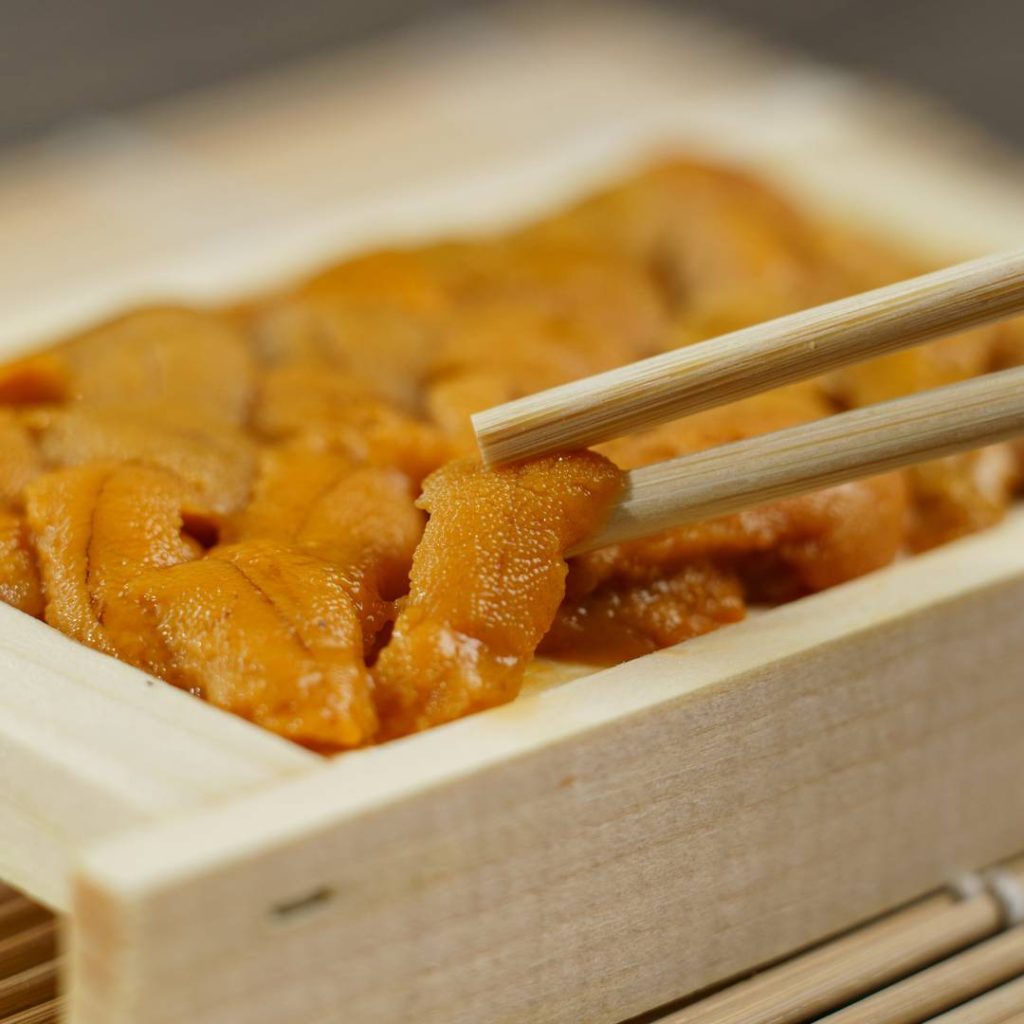
Varieties of Uni
There are several varieties of uni available, each with its own unique flavor and texture. Here are some of the most common types of uni used in sushi:
Murasaki Uni
Murasaki uni is the most common type of uni found throughout Japan. It comes from a dark purple sea urchin with long pointed spines. The uni itself is mustard yellow in color and has a clean, mildly sweet taste. It’s best eaten in sushi or as sashimi to enjoy its delicate flavors.
Bafun Uni
Bafun uni is also known as horse dung sea urchin, and it comes from a green sea urchin with short spines. It has a bright orange color and a rich, creamy flavor that is slightly sweet. Bafun uni is often used in sushi rolls and is a popular choice among sushi lovers.
Aka Uni
Aka uni is also known as red sea urchin and comes from a sea urchin with red spines. It has a bright orange color and a slightly briny taste. Aka uni is often used in sushi and sashimi and is a popular choice among sushi connoisseurs.
Kita-Murasaki Uni
Kita-murasaki uni is a type of uni that comes from the northern part of Japan. It has a bright orange color and a sweet, delicate flavor. Kita-murasaki uni is often used in sushi and sashimi and is a popular choice among sushi lovers.
Ezo-Bafun Uni
Ezo-bafun uni is a type of uni that comes from the northern part of Japan. It has a bright orange color and a rich, creamy flavor that is slightly sweet. Ezo-bafun uni is often used in sushi rolls and is a popular choice among sushi connoisseurs.
Giant Red Sea Urchin
Giant red sea urchin is a type of uni that comes from a large sea urchin with red spines. It has a bright orange color and a slightly sweet, briny taste. Giant red sea urchin is often used in sushi and sashimi and is a popular choice among sushi lovers.

Grading of Uni
Uni sushi, or sea urchin sushi, is graded based on factors such as taste, color, freshness, and texture. The grading system is used to differentiate between different qualities of uni and determine their market value.
The most commonly used grading system for uni sushi is the A, B, and C grading system. The grading system is based on the color, texture, and flavor of the uni.
- Grade A Uni: This is the highest grade of uni sushi and is considered the best quality. Grade A uni has a bright yellow or gold color, a firm texture, and a sweet taste. It is the most sought-after and is the purest form of uni.
- Grade B Uni: This is the second-highest grade of uni sushi. Grade B uni has a slightly softer texture and a milder flavor than Grade A uni. It is usually a light yellow or orange color.
- Grade C Uni: This is the lowest grade of uni sushi. Grade C uni has a softer texture and a more bitter taste than Grade A and B uni. It is usually a darker orange or brown color.
It is important to note that the grading system for uni sushi can vary depending on the region or country. For example, in Japan, uni sushi is often graded on a scale of 1 to 5, with 1 being the best quality.
When purchasing uni sushi, it is important to look for fresh uni that is still in its original packaging. Fresh uni should be firm and bright colored without any signs of seepage. It is also important to purchase uni from a reputable supplier to ensure its quality.
Nutritional Value of Uni
Uni is not only delicious, but it also has a good nutritional profile that makes it a healthy addition to your diet.
Uni is low in calories, with about 34 calories per ounce, making it a great option for those who are watching their calorie intake. Additionally, uni is an excellent source of protein, with about 4.7 grams of protein per 25-gram serving, which is essential for building and repairing tissues in the body.
Uni is also rich in omega-3 fatty acids, which are essential fatty acids that play an important role in maintaining heart health and reducing inflammation in the body. Omega-3 fatty acids are also important for brain health and can help improve cognitive function.
Furthermore, uni is a good source of vitamin A, which is important for maintaining healthy vision, skin, and immune systems. Vitamin A is also an antioxidant that helps protect the body from damage caused by free radicals.
Uni is low in cholesterol and fiber, which makes it a good option for those who are looking to maintain healthy cholesterol levels and a healthy digestive system.
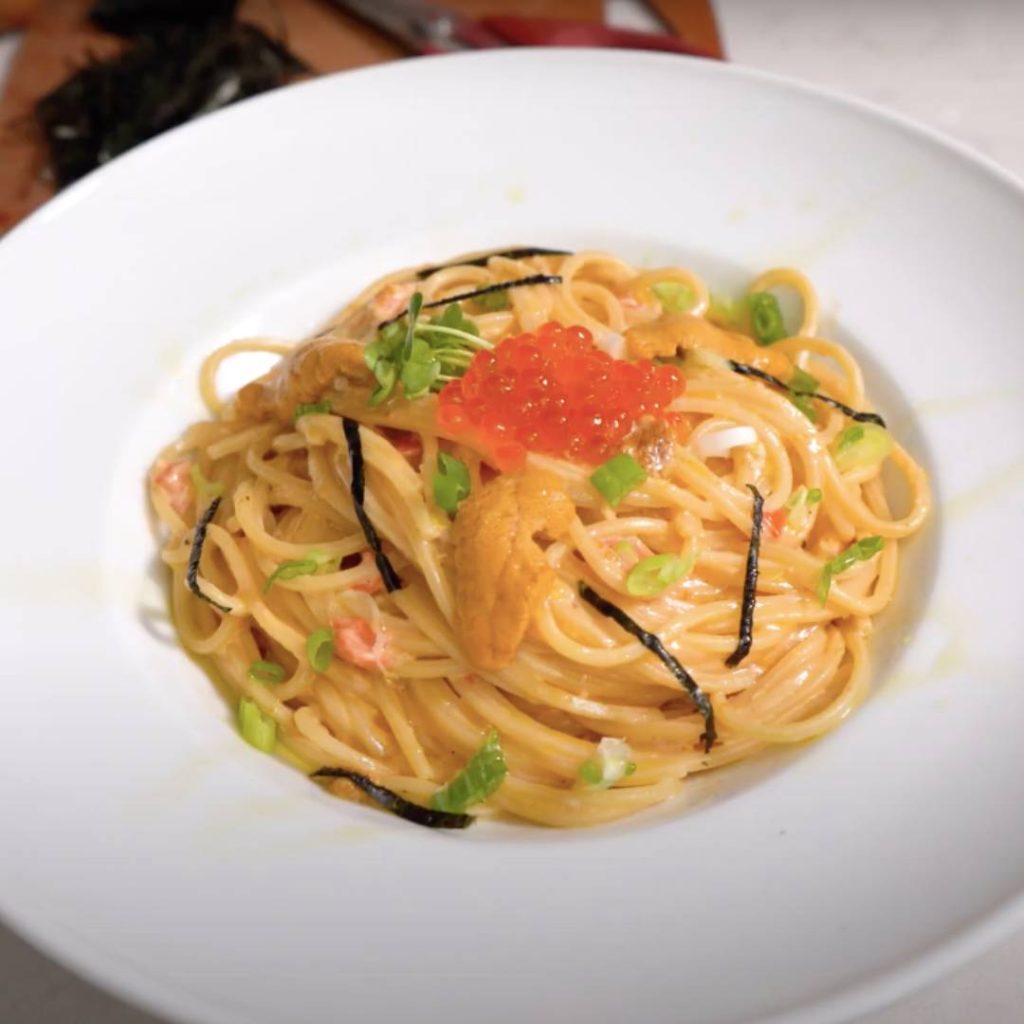
Uni in Different Dishes
Uni, also known as sea urchin, is a delicacy that is commonly used in sushi. However, it can also be used in a variety of other dishes. Here are some ways that uni can be enjoyed in different dishes:
Uni Pasta
Uni pasta is a popular dish that is often served in Italian restaurants. The pasta is usually made with spaghetti or linguine and is topped with a creamy uni sauce. The sauce is made by blending uni, butter, cream, and Parmesan cheese. The result is a rich and flavorful dish that is perfect for seafood lovers.
Buttered Uni Toast
Buttered uni toast is a simple yet delicious way to enjoy uni. The dish is made by toasting a slice of bread and spreading butter on it. The uni is then placed on top of the buttered toast. This dish is perfect for breakfast or as a light snack.



Konnichiwa! (Hello!) I'm Pat Tokuyama, a Japanese tofu cookbook author, who travels for music, food, and adventure. If you like Japanese tea, checkout some of the newestorganic japanese tea, matcha bowls and noren and more!
** Curious about the Plant Based Japanese Cooking Club? ** Learn more here!
Chawanmushi
Chawanmushi is a Japanese egg custard dish that is often served as an appetizer. Uni is sometimes added to the custard to give it a rich and savory flavor. The custard is usually steamed and served in a small cup or bowl.
Uni can also be used as a topping for various dishes. It is commonly used as a topping for sushi, but it can also be used to top salads, rice bowls, and more. The creamy texture and rich flavor of uni make it a versatile ingredient that can be used in a variety of dishes.

Uni in Sushi Restaurants
Uni sushi is a delicacy that is highly sought after in sushi restaurants around the world. It is often served as nigiri sushi, which consists of a small ball of sushi rice topped with a piece of fresh uni. Uni sushi is also commonly served as part of a sushi platter or as a standalone dish.
When ordering uni sushi at a sushi restaurant, it is important to ensure that the uni is fresh.
Uni sushi pairs well with other seafood items such as salmon roe (ikura) and shrimp. The combination of the sweet, creamy uni with the salty and crunchy ikura and the tender, succulent shrimp creates a flavor explosion in your mouth.
To fully enjoy the flavors of uni sushi, it is recommended to eat it without any soy sauce or wasabi. The natural flavors of the uni should be allowed to shine through without any overpowering flavors.

Harvesting and Distribution of Uni
Uni is a highly sought-after delicacy that is harvested from sea urchins. The process of harvesting uni is a delicate and time-consuming process that requires skilled divers. Uni is mostly harvested in Hokkaido, Japan, Santa Barbara, California, and Vancouver, Canada. However, it can also be found in other locations like Maine, U.S.
Uni is harvested by hand, and divers must be careful not to damage the sea urchins while doing so. The divers must also be careful not to disturb the ocean floor or cause any damage to the environment. Once harvested, the uni is immediately cleaned and packaged to ensure its freshness.
Uni is distributed to restaurants and fish markets worldwide. The distribution process is carefully monitored to ensure that the uni remains fresh and of the highest quality. In some cases, uni is air-shipped to its destination to ensure its freshness.
Sea urchin harvesting is a highly regulated industry, and divers must adhere to strict guidelines to ensure that the environment is not harmed. In addition, the harvesting of uni is seasonal, and it is only available during certain times of the year. The quality of uni can also vary depending on the location and time of year it was harvested.
Uni in the Market
Uni, also known as sea urchin, is a highly sought-after delicacy in the sushi world. It is a staple in high-end sushi bars and is considered a delicacy in Japan. Uni is also popular in other Asian countries such as Korea and China.
Uni is harvested from the ocean and sold in markets around the world. The largest market for seafood and sea urchins is the Toyosu-shijou market in Tokyo, where uni is traded on a comparable scale to tuna. The daily price of uni is determined at the uni auction (uni no seri), which is not a classical auction but rather a bidding process where the highest bidder gets the product.
Uni is one of the few seafood products whose price is still determined by auction nowadays. This means that the price of uni can be quite expensive, especially if demand is high. The price can vary depending on the season, location, and quality of the uni.
In addition to high-end sushi bars, uni can also be found in Asian grocery stores and markets. However, the quality and price of uni in these markets may vary. It is important to choose uni that is fresh and of high quality to ensure the best taste and texture.


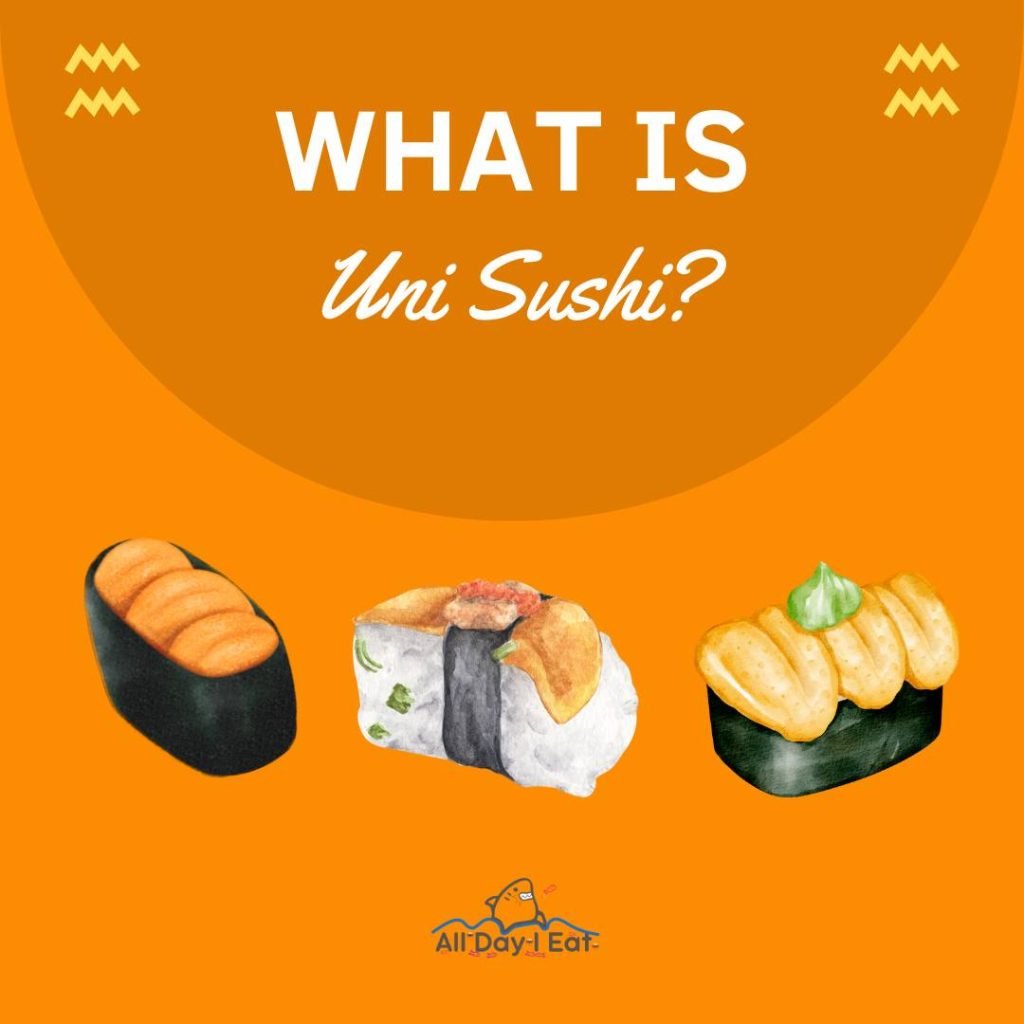








Konnichiwa! (Hello!) I'm Pat Tokuyama, a Japanese tofu cookbook author, who travels for music, food, and adventure. If you like Japanese tea, checkout some of the newestorganic japanese tea, matcha bowls and noren and more!
** Curious about the Plant Based Japanese Cooking Club? ** Learn more here!